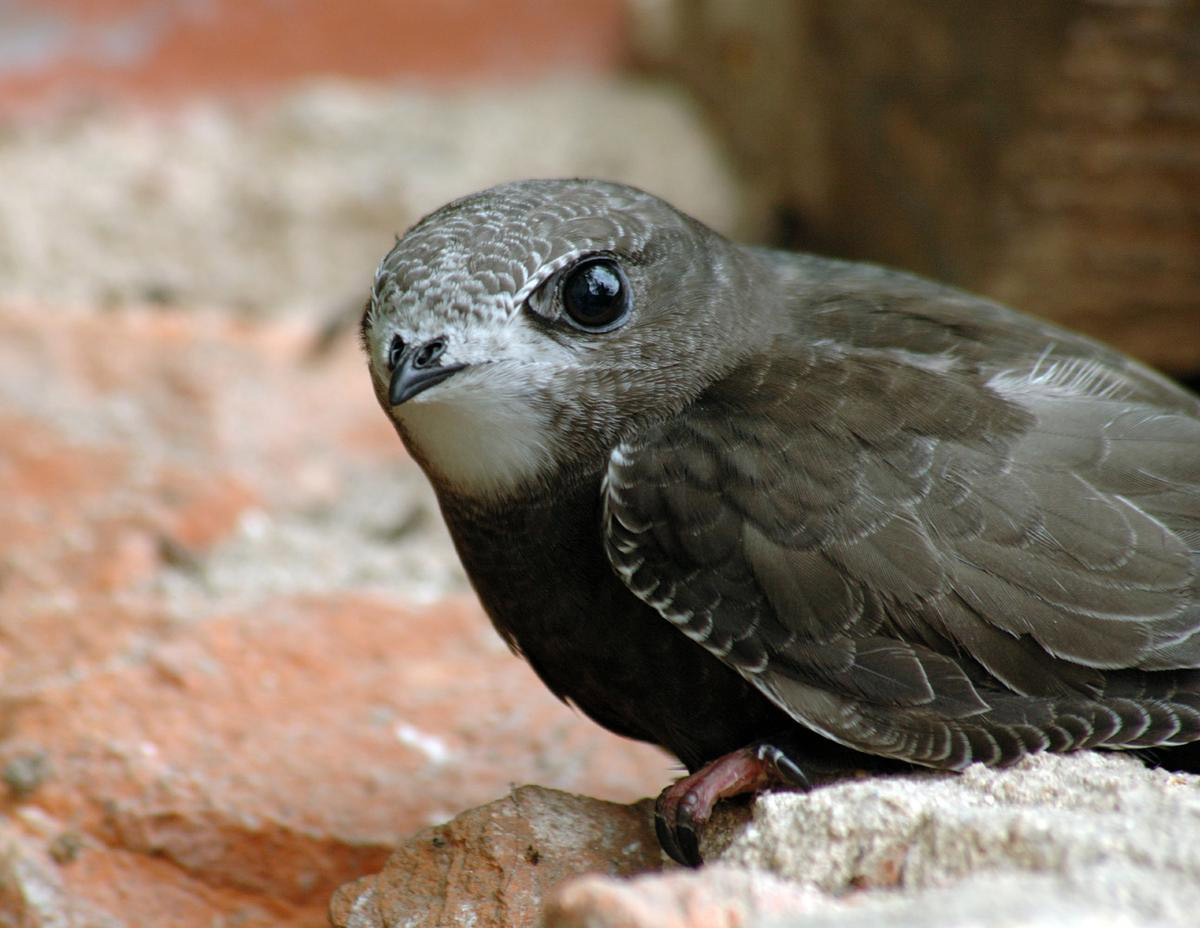Common swift
 Swifts are small birds that are excellent flyers. They look like swallows and are often confused with them. They spend their entire life in the air - they feed, coop, gather construction material, drink water, and even bathe. With the help of radars, it was found that before the night falls, small groups of swifts rise to a great height, over 1500 m, and fly there. Swifts do not have a constant body temperature, like other birds. Their temperature may temporarily fall and the birds fall into a stoned state. In the case of sudden cold during the spawning period, when the flying insects that they feed on disappear, the adults fly out of the area, and the small ones in the nest get numb in a few days.
Swifts are small birds that are excellent flyers. They look like swallows and are often confused with them. They spend their entire life in the air - they feed, coop, gather construction material, drink water, and even bathe. With the help of radars, it was found that before the night falls, small groups of swifts rise to a great height, over 1500 m, and fly there. Swifts do not have a constant body temperature, like other birds. Their temperature may temporarily fall and the birds fall into a stoned state. In the case of sudden cold during the spawning period, when the flying insects that they feed on disappear, the adults fly out of the area, and the small ones in the nest get numb in a few days.
In Palearctic, Apus apus is a widespread, migratory species. Due to its large area, this species inhabits both regions north of Scandinavia and Russia, as well as areas with Mediterranean climate in southern Europe and North Africa, Central Asia and semi-arid areas. In the past, it has inhabited mostly rocky terrains and old thin woods. Today Apus apus is one of the most common synanthropic bird species.
The common swift is completely black with a bright spot on the throat. The wings are long, narrow and curved. Its plumage . Therefore, it can not take off equal surfaces. Very often people find birds on the ground and think they are injured, but they really have to just throw them in the air and they will fly off.
In Burgas the species arrives in mid-April and remains until mid-September. Usually it nests in colonies under the roofs and eaves of buildings, rock crevices, small caves and others. For the nests are used feathers, wool, leaves and straws, inside are laid 2-3 white eggs. Cold and rainy weather brings with it a low breeding success. The species often issues loud noises, which could easily be noticed and distinguishes it from swallows.
Svetla Dalakchieva

